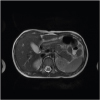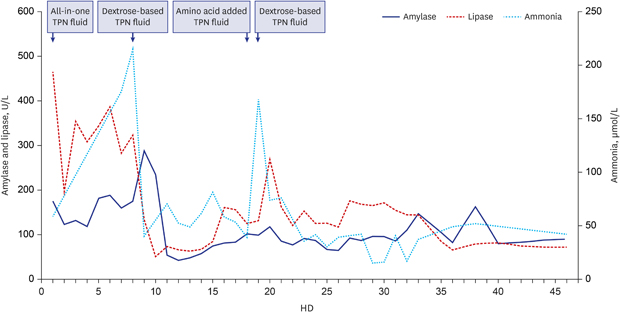1. Chapman KA, Summar ML. Propionic acidemia consensus conference summary. Mol Genet Metab. 2012; 105(1):3–4.
2. Yoo HW. Epidemiologic Research of Genetic and Metabolic Disease in Korea. Cheongju: Korea Centers for Disease Control and Prevention;2006.
3. Lehnert W, Sperl W, Suormala T, Baumgartner ER. Propionic acidaemia: clinical, biochemical and therapeutic aspects. Experience in 30 patients. Eur J Pediatr. 1994; 153(7):Suppl 1. S68–S80.
4. Sass JO, Hofmann M, Skladal D, Mayatepek E, Schwahn B, Sperl W. Propionic acidemia revisited: a workshop report. Clin Pediatr (Phila). 2004; 43(9):837–843.
5. van der Meer SB, Poggi F, Spada M, Bonnefont JP, Ogier H, Hubert P, et al. Clinical outcome and long-term management of 17 patients with propionic acidaemia. Eur J Pediatr. 1996; 155(3):205–210.
6. Pena L, Franks J, Chapman KA, Gropman A, Ah Mew N, Chakrapani A, et al. Natural history of propionic acidemia. Mol Genet Metab. 2012; 105(1):5–9.
7. Lee EH, Ko JM, Kim JM, Yoo HW. Genotype and clinical features of Korean patients with methylmalonic aciduria and propionic aciduria. Korean J Pediatr. 2008; 51(9):964–970.
8. Kahler SG, Sherwood WG, Woolf D, Lawless ST, Zaritsky A, Bonham J, et al. Pancreatitis in patients with organic acidemias. J Pediatr. 1994; 124(2):239–243.
9. Sag E, Cebi AH, Kaya G, Karaguzel G, Cakir M. A rare cause of recurrent acute pancreatitis in a child: isovaleric acidemia with novel mutation. Pediatr Gastroenterol Hepatol Nutr. 2017; 20(1):61–64.
10. Rafique M. Propionic acidaemia: demographic characteristics and complications. J Pediatr Endocrinol Metab. 2013; 26(5-6):497–501.
11. Grünert SC, Müllerleile S, De Silva L, Barth M, Walter M, Walter K, et al. Propionic acidemia: clinical course and outcome in 55 pediatric and adolescent patients. Orphanet J Rare Dis. 2013; 8(1):6.
12. Bultron G, Seashore MR, Pashankar DS, Husain SZ. Recurrent acute pancreatitis associated with propionic acidemia. J Pediatr Gastroenterol Nutr. 2008; 47(3):370–371.
13. Gilmore A, Bock HG, Nowicki M. Hyperamylasemia/hyperlipasemia in a child with propionic acidemia. Am J Med Genet A. 2008; 146A(23):3090–3091.
14. Wolf B, Hsia YE, Sweetman L, Gravel R, Harris DJ, Nyhan WL. Propionic acidemia: a clinical update. J Pediatr. 1981; 99(6):835–846.
15. Fortson MR, Freedman SN, Webster PD 3rd. Clinical assessment of hyperlipidemic pancreatitis. Am J Gastroenterol. 1995; 90(12):2134–2139.
16. Criddle DN, Murphy J, Fistetto G, Barrow S, Tepikin AV, Neoptolemos JP, et al. Fatty acid ethyl esters cause pancreatic calcium toxicity via inositol trisphosphate receptors and loss of ATP synthesis. Gastroenterology. 2006; 130(3):781–793.
17. Debray FG, Drouin E, Herzog D, Lortie A, Lambert M, Garel L, et al. Recurrent pancreatitis in mitochondrial cytopathy. Am J Med Genet A. 2006; 140(21):2330–2335.
18. Kabadi UM. Pancreatic ketoacidosis: ketonemia associated with acute pancreatitis. Postgrad Med J. 1995; 71(831):32–35.
19. Lemire EG, Moroz S, Pollack B, Postuma R, Greenberg CR. Acute pancreatitis in a patient with glutaric acidemia type I. J Pediatr. 1996; 128(4):589–590.
20. Walter JH, Leonard JV, Thompson GN, Halliday D. Parenteral nutrition in propionic acidemia and methylmalonic acidemia. J Pediatr. 1990; 117(2 Pt 1):338–339.






 PDF
PDF Citation
Citation Print
Print




 XML Download
XML Download